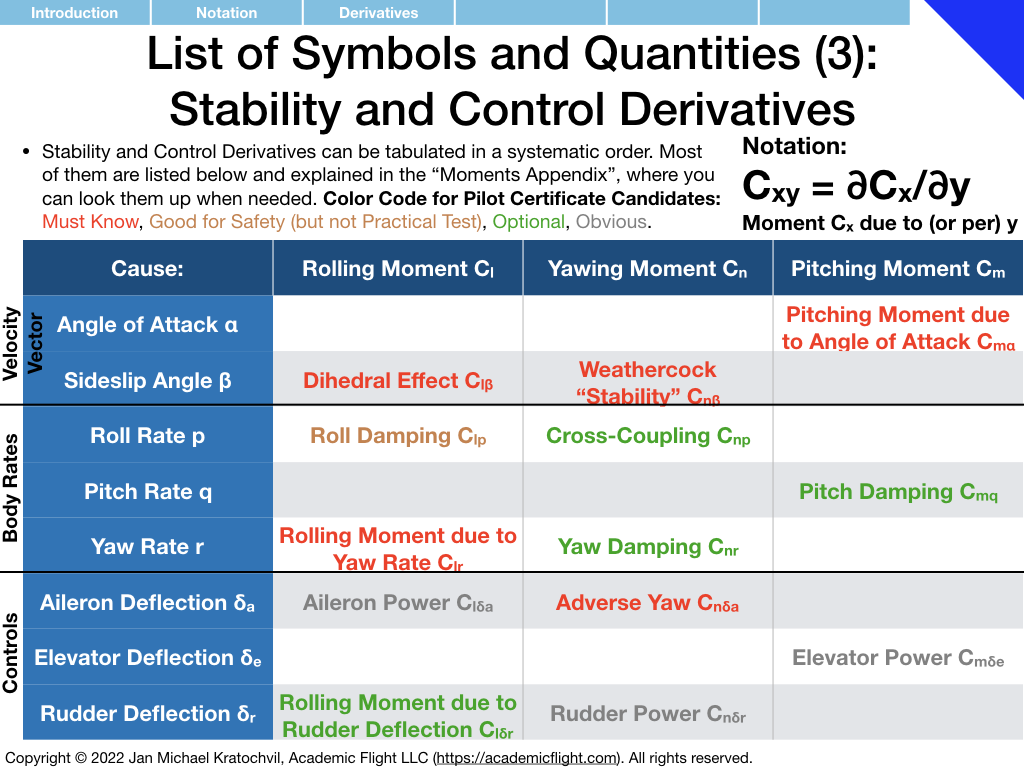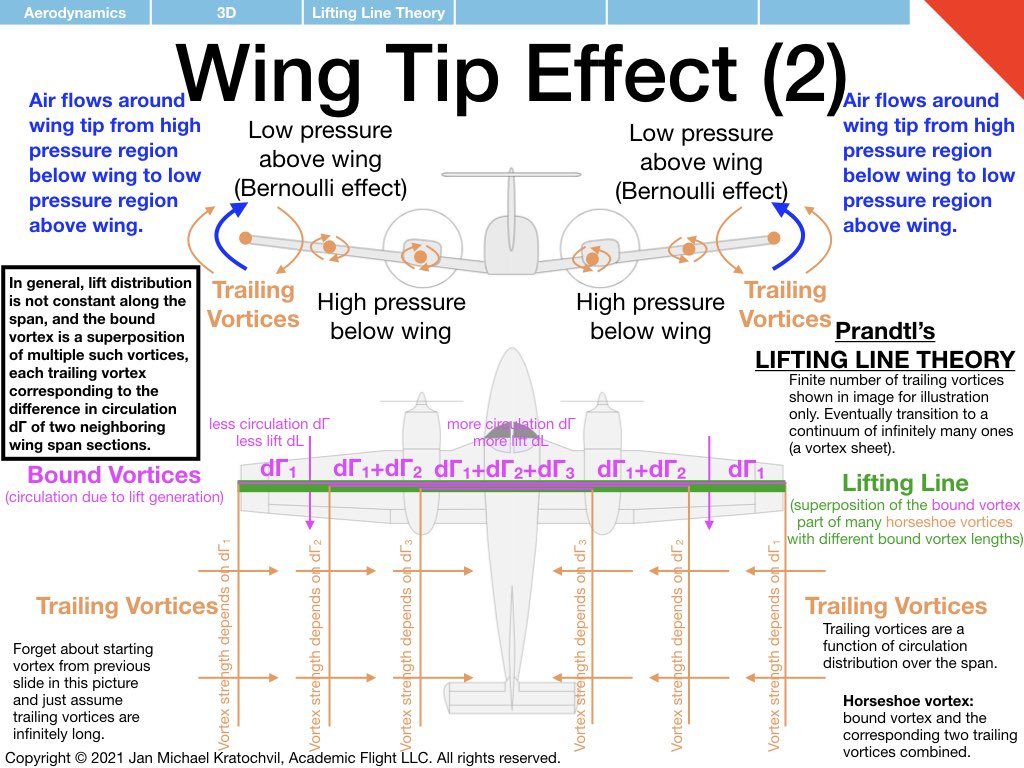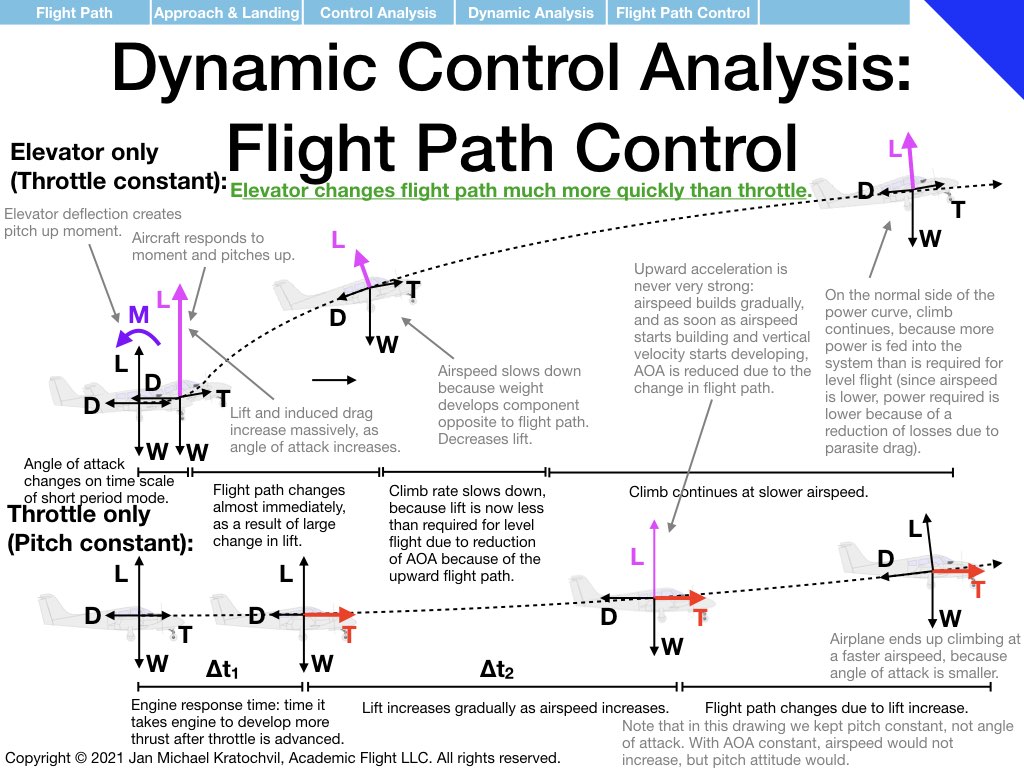
What is an Online Private Pilot Ground School?
An online private pilot ground school teaches student pilots how to fly over the internet. The private pilot ground school explains how to pilot an aircraft, and also teaches the theory of flight, aircraft systems, and the regulations governing flight operations. This pilot knowledge – combined with actual flight training in an aircraft under the supervision of a certificated flight instructor (CFI) – leads to the student pilot obtaining a private pilot license (PPL), in the U.S. more properly referred to as the private pilot certificate.
If I am looking for a private pilot ground school, then the online aspect of this private pilot ground school relieves me from having to look for a private pilot ground school near me.
About this Online Private Pilot Ground School
With this online course, we have aspired to create one of the most comprehensive and best online private pilot ground schools available. You can attend our private pilot ground school online in two versions: the Amateur Track for hobbyists, who want to learn to fly for fun, and the Professional Track for aspiring future professional military and test pilots and aerospace engineers.
The primary target audience of the Professional Track of our online private pilot ground school are avid students in high school who are willing to start early and study whatever it takes to achieve their ambitious career goals. However, adults with strong backgrounds in a STEM field may also appreciate this approach to flight training, which makes extensive use of their existing academic background. Note that if you are in high school, the Professional Track may take you several years to fully understand and complete (and you may want to take it several times); that is ok, you have the time, that’s why you are starting early.
Below we describe the two private pilot ground school tracks in turn and then present their interweaving class schedule for the 2022-23 academic year. The live online classes are supported by a specialized online self-study course, accompanying the lectures and explaining selected difficult concepts in more detail.
The cost of private pilot ground school is detailed below. Discounts apply. For instance, for cadets and senior members of the Civil Air Patrol, this is a free online private pilot ground school.
Table of Contents of This Page
- Private Pilot Ground School Description:
- Private Pilot Ground School Schedule
- Private Pilot Ground School Syllabus:
- Private Pilot Ground School References
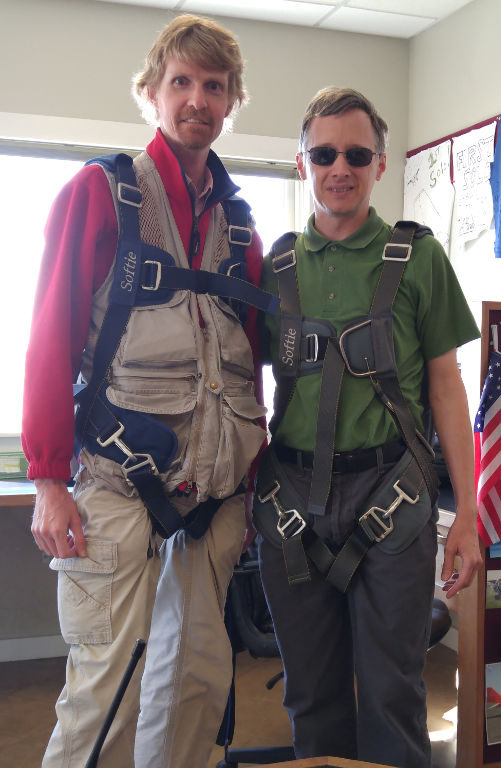
Amateur Track
Primary Objectives
- FAA Private Pilot Certificate (with Airplane Single-Engine Land or Sea or Glider Rating)
- Becoming a reasonably safe pilot with limited time and effort investment.
- Being able to reference FAA publications as needed, when something needs to be looked up (e.g. before flight or during the oral part of the FAA Practical Test).
We take a holistic approach to flight instruction for your private pilot’s license. Some may claim that the best private pilot ground school assumes that you do not remember anything learned in high school. We disagree, because such a private pilot ground school is forced to build its lessons of flight on a shaky foundation of diffuse gut feelings about our physical world. One of the challenges that the student faces in such a shallow approach is that, whenever something new is encountered, the student must continuously adjust their incorrect or incomplete physical world picture, which takes time and effort.
If you do not remember your high school classes (or have not had all of them yet), it is no problem at all. Our online private pilot ground school reviews some of these relevant concepts with you first, and then builds solidly upon them to form a correct and consistent physical world view.
Not only does this have the benefit of teaching you to how to fly more easily and making you a more knowledgeable private pilot’s license holder, but it also has the potential to improve your grades in school, if you are still a high school student. In fact, you can let your passion for flight and aviation fuel your performance in related STEM fields like physics, mathematics, engineering, and even computer science.
But all with good measure. The priority of the Amateur Track is still to get you prepared for your FAA Knowledge Test and the oral part of the FAA Practical Test for the FAA private pilot certificate, while trying to keep your training time expense at a minimum. In your search for the best online private pilot ground school to fit your individual needs, we encourage you to try out our private pilot ground school online.
The primary source of information for the student pilot in the Amateur Track of the private pilot ground school are the FAA handbooks published by the Federal Aviation Administration (FAA) (see references below), in particular the Pilot’s Handbook of Aeronautical Knowledge and the Airplane Flying Handbook and/or Glider Flying Handbook. The live online lectures of this private pilot ground school course serve in support of these primary sources: they enable the interactive explanation of difficult concepts and allow the student pilots to ask questions.
An interface to flight training and the flying part of the FAA Practical Test is also established in our online private pilot ground school by the means of practice by the students with their flight simulator on their home computer. The computer screen can be shared online with the flight instructor. This allows excellent procedural training on the ground without incurring airplane operating cost, such that the only things remaining to be practiced in the airplane are muscle memory, hand-eye coordination, and certain aspects of operations in a real flight environment, which are difficult to simulate. Everything else should be rehearsed by the flight students over and over on the ground.
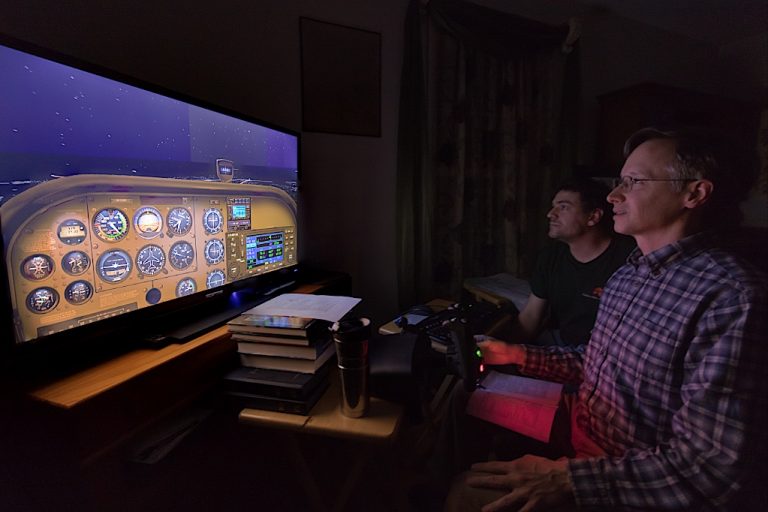
Primary Objectives
- FAA Pilot Certificate (Private Pilot or higher) with Airplane Single-Engine, Multi Engine, and/or Glider Rating.
- Preparation for applications to military academies with intention of becoming a pilot.
- Preparation for applications to top civilian universities in the fields of aerospace engineering, physics, mathematics, and/or other related STEM disciplines.
- Obtaining at the very least a conversational knowledge of flight test engineering (better more), potentially as preparation for future test pilot school attendance.
Professional Track
The Professional Track of our private pilot ground school distinguishes itself by the use of professional aerospace engineering language, symbology, and concepts, as well as unrestricted academics. We want your education to stand out and be compatible with aerospace professionals. This track is demanding. You may see classmates leave. You may not even start with many classmates to begin with. And you know that this is good, because if there were hundreds of other students with you in your class with the same knowledge, your education would not stand out anymore in your college applications to military academies and top civilian universities upon high school graduation.
Since obtaining your private pilot certificate (or higher) is only one of many aspects of your college application portfolio, you will tie it into your other academic achievements by completing a couple of stand-out projects along the way, like flight test data analysis or using sensor fusion and an extended Kalman filter to write a code similar to those found in modern Attitude and Heading Reference Systems (AHRS).
If you already are an aerospace engineer, this class is also one of the few places in the country, where you can freely use stability and control derivatives, Euler angles, body rates, inertia tensors, etc., for an efficient and precise communication between you and your instructors, as you apply important flight dynamics concepts such a roll damping and inertia coupling to everyday and upset recovery scenarios.
Advanced flight dynamics concepts will be introduced intuitively at the level of Bill Crawford’s renowned upset prevention and recovery training program Flightlab, and then backed up by (optional) full mathematical derivations found in the USAF Test Pilot School and USNTPS textbooks at the students’ discretion (see advanced references at the bottom of this page).
The Professional Track contains the Amateur Track as a subset to ensure you make steady progress towards your FAA Knowledge Test and the oral part of the FAA Practice Test and do not get lost solely in advanced concepts.
Online Private Pilot Ground School Schedule
- Class and Topic Schedule for Private Pilot Ground School Academic Year 2022-2023
Course Materials for Class 2022-2023 (not uploaded, email the lecturer) - Class and Topic Schedule for Private Pilot Ground School Academic Year 2023-2024
Course Materials for Class 2023-2024
Private Pilot Ground School Syllabus
This section is still under construction. For now, please refer to the class and topic schedule at the link above for topics and references. The topics below are for the Professional Track. The Amateur Track covers a suitable subset (see e.g. the tables of contents and contents of PHAK [1], AFH [2], AIM [8], and the other references listed for this track at the bottom of this page).
Private Pilot Ground School Topics
Aerodynamics
How aerodynamic forces are generated due to airflow over airframe. Airfoils, Planforms, Resultant Aerodynamic Force (Lift, Drag, Side Force), Aerodynamic Stall, Boundary Layer Control devices.
Kutta-Joukowski Theorem, Kutta Condition, Thin Airfoil Theory, Prandtl Lifting-Line Theory, etc.
References
[1] PHAK Chapter 4, Chapter 5, Chapter 6; [10] Flightlab; [11] Hurt, Naval Aviators.
[12] USAF TPS Vol I; [16] USNTPS-FTM-No. 108; [28] Anderson.
Stability and Control (Flying Qualities)
Kinetics, Kinematics, Aircraft Attitude; Forces and Moments, Stability and Control Derivatives, Static and Dynamic Stability, Maneuvering Stability, High-Angle-of-Attack Flight (Stalls, Spins – incl. Accelerated, Flat, and Inverted Spins), Roll Coupling, Flight Controls, Flight Training Maneuvers for the Private Pilot Certificate, Upset Prevention and Recovery Training (UPRT) Theory.
References
[1] PHAK Chapter 5, Chapter 6; [2] AFH; [3] GFH; [9] ACS; [10] Flightlab; [11] Hurt, Naval Aviators.
[13] USAF TPS Vol II Part 1, [14] USAF TPS Vol II Part 2; [17] USNTPS-FTM-No. 103, [21]-[27] Aircraft Attitude, Rotation Formalisms in 3D, Linear Algebra.
Performance
Takeoff, climb, en route (range, endurance), and landing performance; best-angle-of-climb and best-rate-of-climb airspeeds \(V_X\) and \(V_Y\), absolute and service ceiling, turn performance (minimum turn radius, maximum turn rate – instantaneous and sustainable), corner speed, V-n diagram, power-off minimal altitude loss per degree of turn (turnback maneuver, “impossible turn”); propeller theory, blade element momentum (BEM) theory.
Weight and Balance
Center of gravity, arm, weight force, moment; weight and balance calculations; center of gravity and weight limits, dangers of flying outside the approved weight-and-balance envelope, how location of center of gravity affects performance and handling/flight characteristics.
References
Aircraft Systems
Engine, Propeller, Pitot-Static System, Electrical System, Landing Gear (Hydraulic System), Deicing and Anti-icing Systems, Flight Instruments, etc.
Aviation Weather
Weather Theory, Aviation Weather Services, Soaring Weather (for Glider Pilots)
The aviation weather discussion in this online private pilot ground school includes the following topics.
Weather Theory: Atmosphere (layers, composition, lapse rate, pressure, International Standard Atmosphere (ISA)), air masses, fronts, high/low pressure regions, isobars, Coriolis force, wind direction, types of winds, atmospheric stability, moisture (water content), cloud types (incl. fogs), types of precipitation, weather hazards (frost and icing, thunderstorms and microbursts, mountain wave rotor, wind shear, wake turbulence (from other aircraft), etc.), vertical winds (lift – incl. thermals, ridge lift, wave, convergence).
Weather Reports and Forecasts: Meteorological Aerodrome Report (METAR), Terminal Aerodrome Forecast (TAF), Area Forecast (FA), pilot report (PIREP), Airman’s Meteorological Information (AIRMET), Significant Meteorological Information (SIGMET), Convective SIGMET, weather charts, official weather briefing (1-800-WX-BRIEF), soaring forecasts (e.g. NAM and RAP BLIPMAPs), weather resources and where to obtain information regarding aviation weather (weather briefer, Flight Service Station (FSS), internet, mobile apps (e.g. ForeFlight, WingX Pro, etc.).
References
[1] PHAK, Chapter 12; [1] PHAK, Chapter 13; [AC00-6B];[AC00-45H]; [3] GFH, Chapter 9; [8] AIM Chapter 7, Section 1, Section 2, Section 3, and Section 4.
Rules and Regulations
Regulations: 14 CFR Parts 61 and 91; Recommended Procedures and Explanation of Regulations: AIM, Advisory Circulars; Interpretation of Regulations: FAA Legal Interpretations.
Aeronautical Decision Making (ADM)
Systematic approach to the mental processes which a pilot uses to analyze the situation and make decisions in an aviation environment.
Overview and General Concepts:
- Percentage of accidents in general aviation in different phases of flight
- Risk Management (RM)
- Crew Resource Management (CRM)
- Single-Pilot Resource Management (SRM): concepts of ADM, RM, task management (TM), automation management (AM), controlled flight into terrain (CFIT) awareness, situational awareness (SA).
Analytical Decision-Making Process Models:
- 5P Model (Plan, Plane, Pilot, Passengers, Programing), also called 5P Check or 5P Process.
- 3P Model (Perceive, Process, Perform).
- DECIDE Model (Detect, Estimate, Choose a course of action, Identify solutions, Do necessary actions, Evaluate effects of actions).
Specific RM Checklists:
- For hazard identification: PAVE checklist (Pilot, Aircraft, enVironment, External pressures).
- For hazard evaluation and risk assessment: CARE Checklist (consequences, alternatives, reality, external factors) to review hazards and evaluate risks.
- For addressing risk: TEAM Checklist (Transfer, Eliminate, Accept, Mitigate risk) to choose and implement risk controls.
Risk Management (RM):
- Hazard Identification (using the PAVE checklist to detect potentially dangerous aspects of a situation which have the possibility of leading to injury or loss),
- Hazard Evaluation and Risk Assessment (using the CARE checkist for each PAVE checklist point and using a risk assessment matrix (exposure, likelihood, severity) to determine the risk associated with the hazard),
- Risk Control (using the TEAM checklist to decide what to do about the risk).
Human Factors and Behavior:
- The five hazardous attitudes (anti-authority, impulsivity, invulnerability, macho, resignation) and corresponding antidotes.
- Decision making in a dynamic environment: analytic (e.g. DECIDE model) vs automatic/naturalistic aeronautical decision making.
- Operational pitfalls and stressors, stress management.
- Resource management: Use of internal and external resources.
- Situational awareness (SA): obstacles to maintaining situational awareness, workload management, managing risks, SAFETY acronym for passenger briefing.
References
Human Factors
Physiology (Aeromedical Factors) and Psychology of Flight
Medical certificate; hypoxic, hypemic, stagnant, and histotoxic hypoxia; hyperventilation; middle ear and sinus problems; spatial disorientation and illusions of the vestibular, somatosensory, and visual systems (the leans, Coriolis illusion, graveyard spiral, somatogravic illusion, inversion illusion, elevator illusion, false horizon, autokinesis); postural considerations; demonstration of spatial disorientation; coping with spatial disorientation; optical illusions due to environment; motion sickness; carbon monoxide poisoning; stress; fatigue; exposure to chemicals; dehydration and heat stroke; nutrition; IMSAFE acronym; alcohol; drugs; altitude-induces decompression sickness; vision in flight; night vision and illusions; scanning techniques; synthetic vision system.
References
Private Pilot Ground School References
References for Amateur Track of Online Private Pilot Ground School
- Pilot’s Handbook of Aeronautical Knowledge, FAA-H-8083-25B, U.S. Department of Transportation, Federal Aviation Administration, Flight Standards Service, Washington, D.C., 2016.
- Airplane Flying Handbook, FAA-H-8083-3C, U.S. Department of Transportation, Federal Aviation Administration, Flight Standards Service, Washington, D.C., 2021.
- Glider Flying Handbook, FAA-H-8083-13A, U.S. Department of Transportation, Federal Aviation Administration, Flight Standards Service, Washington, D.C., 2013.
- Aircraft Weight and Balance Handbook, FAA-H-8083-1B, U.S. Department of Transportation, Federal Aviation Administration, Flight Standards Service, Washington, D.C., 2016.
- Risk Management Handbook, FAA-H-8083-2A, U.S. Department of Transportation, Federal Aviation Administration, Flight Standards Service, Washington, D.C., 2022.
- Code of Federal Regulations (CFR), Title 14 (Aeronautics and Space), Chapter 1, Subchapter D (Airmen), Part 61 (Certification: Pilots, Flight Instructors, and Ground Instructors).
- Code of Federal Regulations (CFR), Title 14 (Aeronautics and Space), Chapter 1, Subchapter F (Air Traffic and General Operating Rules), Part 91 (General Operating and Flight Rules).
- Aeronautical Information Manual (AIM), U.S. Department of Transportation, Federal Aviation Administration, with Change 2, May 19, 2022.
- Private Pilot – Airplane, Airman Certification Standards, FAA-S-ACS-6B, U.S. Department of Transportation, Federal Aviation Administration, Flight Standards Service, Washington, June 2018.
- [AC] FAA Advisory Circulars:
- [AC00-6B] AC 00-6B: Aviation Weather, August 23, 2016.
- [AC00-45H] AC 00-45H: Aviation Weather Services (with Change 2), November 14, 2016.
- [AC61-67C] AC 61-67C: Stall and Spin Awareness Training (with Changes 1 and 2), September 25, 2000.
- [AC60-22] AC 60-22: Aeronautical Decision Making, December 13, 1991.
- [AFAC] FAA Advisory Circulars, an informal collection of selected Advisory Circulars relevant to general aviation, Academic Flight LLC, 2022.
- [LI] FAA Legal Interpretations
- Weather Forecast Resources:
- [WXBRIEF] 1-800-WX-BRIEF,
- [ADDS] Aviation Digital Data Service,
- [DrJack] Dr. Jack,
- [AWCA] Aviation Weather Charts Archive (historic METARs)
Additional References for Professional Track of Online Private Pilot Ground School
- Bill Crawford, Unusual Attitudes and the Aerodynamics of Maneuvering Flight, Flightlab Ground School, http://flightlab.net, Boston 2009.
- Hugh Harrison Hurt, Jr., Aerodynamics for Naval Aviators, NAVAIR 00-80T-80, U.S. Naval Air Systems Command, January 1965.
- USAF Test Pilot School, Performance Phase Textbook, Volume I, USAF-TPS-CUR-86-01, Edwards AFB, California, April 1986.
- USAF Test Pilot School, Flying Qualities Textbook, Volume II, Part 1, USAF-TPS-CUR-86-02, Edwards AFB, California, April 1986.
- USAF Test Pilot School, Flying Qualities Textbook, Volume II, Part 2, USAF-TPS-CUR-86-03, Edwards AFB, California, April 1986.
- USAF Test Pilot School, Flying Qualities Phase Planning Guide, Edwards AFB, California, March 1996.
- Gerald L. Gallagher, Larry B. Higgins, Leroy A. Khinoo, Peter W. Pierce, U.S. Naval Test Pilot School Flight Test Manual: Fixed Wing Performance, USNTPS-FTM-No. 108, Veda Incorporated, Contract N00421-90-C-0022, September 1992.
- U.S. Naval Test Pilot School Flight Test Manual: Fixed Wing Stability and Control—Theory and Flight Test Technique, USNTPS-FTM-No. 103, Naval Air Warfare Center, Aircraft Division, Patuxent River, Maryland, January 1997.
- George Masters, Vernon Gordon, Timothy Lenahan, David Culbertson, Michael Landmann, U.S. Naval Test Pilot School Flight Test Manual: Systems Testing, USNTPS-FTM-No. 109, Naval Air Warfare Center, Aircraft Division, Patuxent River, Maryland, January 2000.
- T6B Driver
- Glider Training, Online Course, Academic Flight LLC, 2022.
- Linear Algebra, Online Course, Academic Flight LLC, 2022.
- Jan Kratochvil, Linear Algebra Primer, Online Article, Academic Flight LLC, 2022.
- Jan Kratochvil, 6 Popular Rotation Formalisms in Kinematics, Online Article Series, Academic Flight LLC, 2022.
- Hanspeter Schaub, Kinematics: Describing the Motions of Spacecraft, Spacecraft Dynamics and Control Specialization, University of Colorado Boulder, Coursera.
- Jan Kratochvil, Rotation with Quaternions, Online Article, Academic Flight LLC, 2022.
- Grant Sanderson, Visualizing quaternions (4d numbers) with stereographic projection, Channel “3Blue1Brown”, YouTube, 2018.
- Mathoma, Geometric Algebra, Playlist on Channel “Mathoma”, YouTube, 2019.
- John D. Anderson, Fundamentals of Aerodynamics, 5th Edition, McGraw-Hill Education, 2010.

